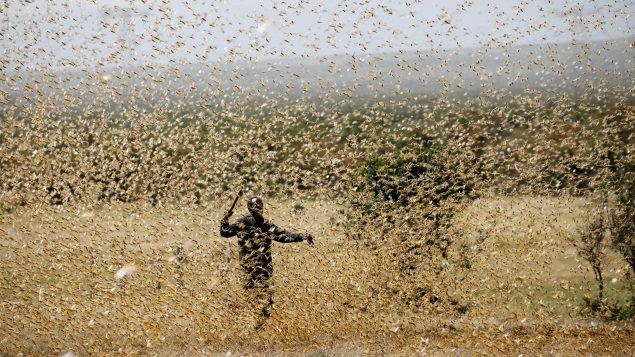The COVID-19 pandemic could drive an additional 10 million children around the world into acute malnutrition, according to the United Nations World Food Programme (WFP).
Acute malnutrition is caused by inadequate food consumption or illness, or both, resulting in sudden weight loss that, if left untreated, can be deadly.
The UN agency says it aims to provide assistance to 100 million people around the world in 2020, including to 22 million children under the age of five and pregnant and nursing mothers, who will receive specialised food and micronutrients for the prevention and treatment of malnutrition.
Results from WFP analysis shows that COVID-19 and its impact on food security could lead to a 15- to 20-per-cent increase in the number of children under-five in need of treatment for acute malnutrition.
UN experts warn that the virus can have a devastating effect on small bodies already weak from poor nutrition.
At the same time, the economic fallout from the pandemic is having a ruinous effect on vulnerable families relying on a daily wage or a remittance, according to UN officials.
Lauren Landis, WFP’s director of nutrition, said COVID-related lockdowns and movement restrictions are severely undermining livelihoods, exacerbating existing threats like conflict and weak health systems, making it especially hard for families in poorer nations to afford a nutritious diet.
“If we fail to act now, we’ll face devastating loss of life, health and productivity in future generations,” Landis said. “Getting nutrition right today will determine whether the consequences of COVID-19 for children will be felt for months, years or even decades to come.”
COVID-19 endangers efforts to control locusts swarms

A man attempts to fend-off a swarm of desert locusts at a ranch near the town of Nanyuki in Laikipia county, Kenya, Feb. 21, 2020. (Baz Ratner/REUTERS)
Aid agencies are also warning that another plague of Biblical proportions threatens food security in some of the most vulnerable regions of the world.
Massive swarms of the voracious desert locust have been damaging crops and pastures and crippling communities in the Greater Horn of Africa, Arabian Peninsula and Southwest Asia since October 2019, according to the Food and Agriculture Organization (FAO).
The UN agency warns that without stronger control measures, locust numbers could swell 20-fold over the coming months following cyclones and widespread rainfall, which create a favorable breeding ground for the voracious insects.
But the pandemic is creating additional challenges for fighting the locust outbreak due to restrictions on the movement of personnel and equipment, including pesticides and protective gear.
The UN is warning that locust swarms could lead to a potential food crisis.
A layered crisis

An internally displaced Somali woman and her children prepare their Iftar meal during the month of Ramadan at the Shabelle makeshift camp in Hodan district of Mogadishu, Somalia May 8, 2020. (Feisal Omar/REUTERS)
Kevina Power, regional resource development director with World Vision East Africa, said the locust swarms could exacerbate an already critical situation in parts of East Africa that has already been compounded by the COVID-19 pandemic.
“In Somalia, for example, where access is limited due to the COVID-19 restrictions between cities and between communities, and obviously because of other pressing issues, we are seeing more and more families go hungry,” Power told Radio Canada International in a Skype interview from Nairobi, Kenya.
“This on top of the issue of the presence of locusts, where even their sustenance farming is being demolished by these pests, even the kitchen gardens that they were planting for their own consumption are being destroyed.”
Power, a Canadian who has lived in Kenya since 2005, said locust swarms can eat their weight in food daily: a swarm covering one square kilometre can eat as much in a day as 35,000 people.
“Some of the headway that we were able to have progressed in graduating these families out of poverty, these layered types of crises will put them at risk of becoming vulnerable to malnutrition,” Power said.







For reasons beyond our control, and for an undetermined period of time, our comment section is now closed. However, our social networks remain open to your contributions.